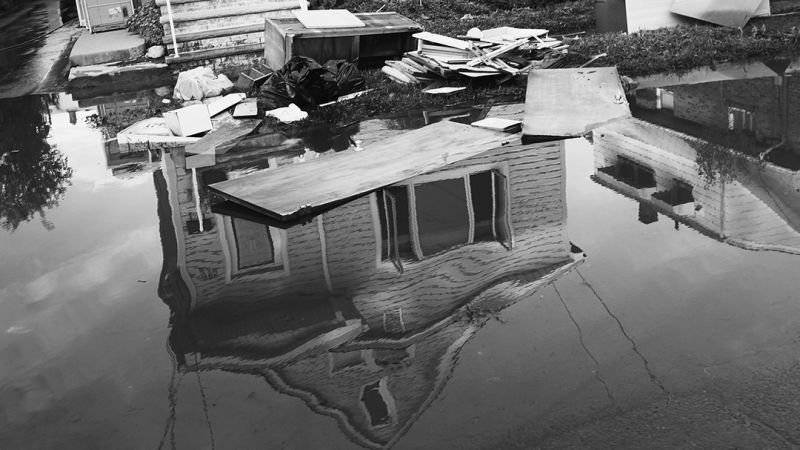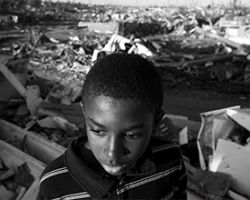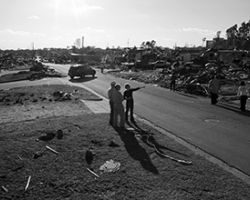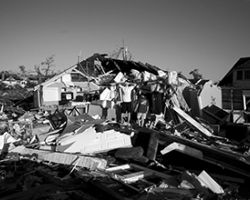Although CatModeling started with natural disasters, it can also be applied to other rare events, including infectious disease outbreaks. Bocchini and his colleagues, including former Lehigh researcher Javier Buceta, currently at the Institute for Integrative Systems Biology (I2SysBio) at the University of Valencia in Spain, are applying the traditional steps of CatModeling to frame Ebola virus outbreaks in Africa and attempt to forecast their impacts. In particular, they try to predict the spread of Ebola in various cities within a broad geographic region. Focusing on bat-transmitted Ebola spillover to humans, they combine a variety of methodologies, including probabilistic regional hazard modeling and big-data analysis, to determine the cities most at risk and what officials in those areas might do to minimize that risk. Their model utilizes bat birth and death rates, the rate of Ebola infection in bats and their recovery rates, bat mobility, seasonal changes and data about the availability of food and shelter for bats in a particular location.
This project is supported by the National Institutes of Health and was initially funded by a Lehigh Collaborative Research (CORE) grant. It has resulted in several publications, including a 2018 paper in
Scientific Reports that proposes the team’s predictive spatial distribution framework and demonstrates its ability to predict where and when an Ebola outbreak is likely to appear. A preprint on
arXiv outlines the team’s use of regression and machine learning techniques to analyze survey data that they personally collected in Africa with a team of undergraduate students; identify the features that best predict an individual’s tendency toward behaviors that expose them to Ebola infection; and develop a predictive model about spillover risk statistics that researchers can calibrate for different regions, including Sierra Leone.
The Best Choices for Tomorrow, Today
CatModeling is an application of probabilistic modeling, which incorporates random variables and probability distributions into models of events, taking into account uncertainties. Researchers “try to look at the future and determine what is the likelihood of something happening [and] at what is the choice that we make today that will have the highest likelihood to be a good choice tomorrow,” explains Bocchini.
The approach is rooted in mathematics but has applications across many disciplines, including engineering, science and the social sciences.
Conus brings theoretical expertise to the team’s work. Unlike statistics, which involves collecting data from the past and trying to explain what happens out of the data, “probability takes sort of the reverse approach,” he explains. “We’re actually trying to come up with a mathematical model that can explain from a theoretical basis what we expect would happen even before we collect the data.”
Prior to his work in CatModeling, Conus worked on mathematical finance and models for particle physics, which, he says, sound drastically different, but they rely on the same mathematical tools. “The approach we take is that what happens in a catastrophe is that you have a lot of small entities that play a role and impact what happens in the big picture. Essentially, the heart of the mathematical techniques that we use is to take all those small effects, and instead of modeling every single one of them, to actually put it together and try to come up with models and equations that describe the big picture without having to look down on every single little entity that makes up the model,” he says.
For any kind of disaster, CatModeling includes the probabilities of different event scenarios, levels of intensity, the region’s vulnerability to damage and the potential financial impact.
Liyang Ma ’20 Ph.D. used intensity measure maps to determine the performance of structures under the conditions of particular catastrophes while working on his doctorate with Bocchini as his advisor. Now a Lehigh postdoctoral fellow working specifically on catastrophe modeling, he develops these maps for different hazards, such as the wind speed, storm-surge level or earthquake magnitude of a region.
“How do I produce very good maps that can represent these catastrophes more precisely [and] more accurately so that when people do[work related to] how structures behave in a hazard, they can get better or more accurate results?” he asks.
For these maps to be representative, he explains, researchers use Monte Carlo simulations to generate a large set of maps given the uncertainty of an event like an earthquake. His goal is to select a smaller set of the most representative maps for that hazard.
Postdoctoral fellow Haifeng Wang, who received his Ph.D. from the University of Buffalo, focuses on wind field simulation. “From a single wind speed, I can generate a large number of wind fields, stochastic pressure fields for a building,” he says. Wang collaborates with Ma by providing the wind load field of an entire building for use in structural response analysis.
“Hazards nowadays become more intense and severe, and human societies are more vulnerable,” says Ma. “In the past, people didn't need electricity or the internet. Nowadays they need those things. They need hot water. When a hazard strikes, like a hurricane, people will be without power for days. So the goal is to make society better prepared for those hazards. ... Catastrophe modeling is a new area that has a bright future for civil engineers.”




